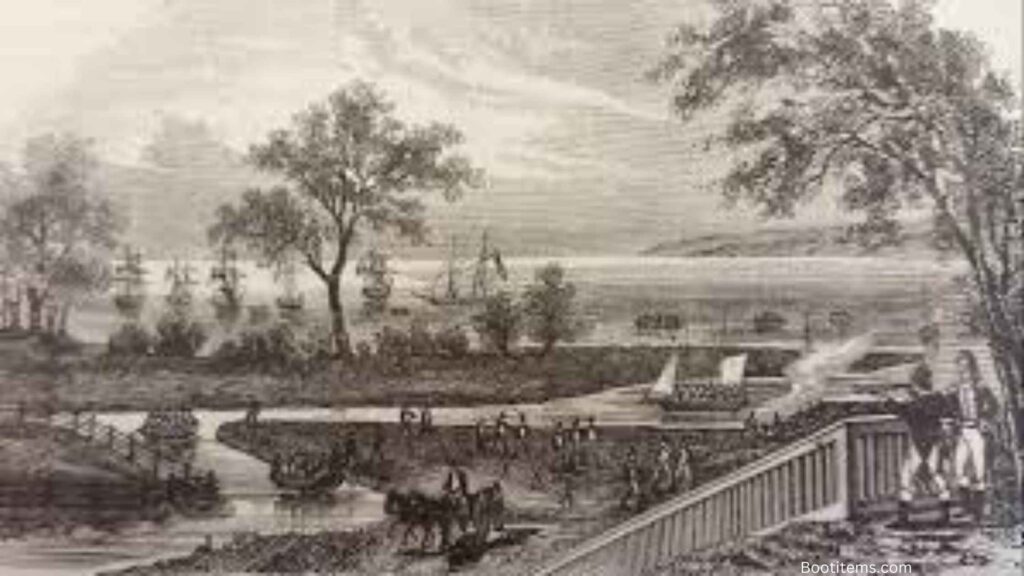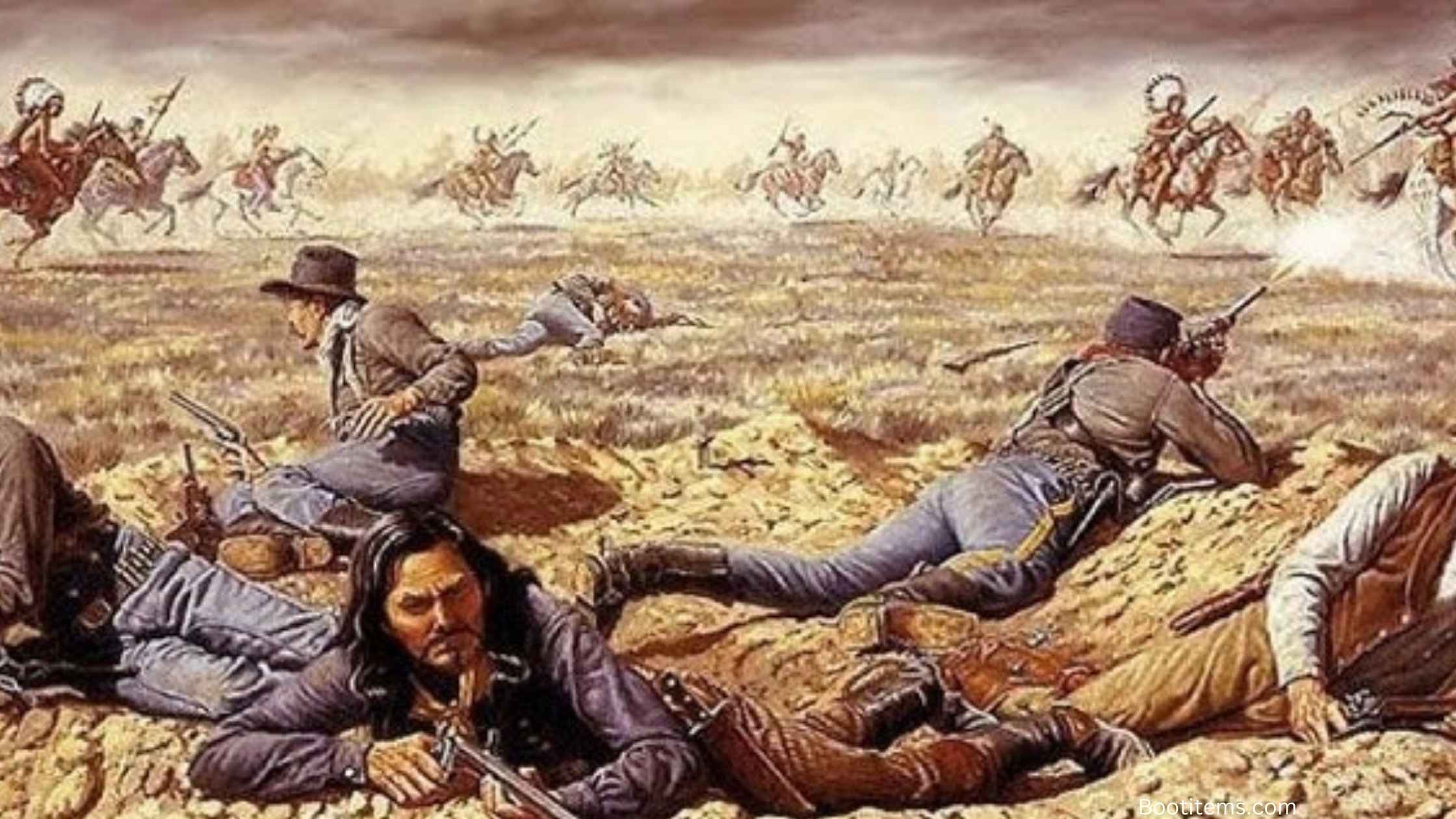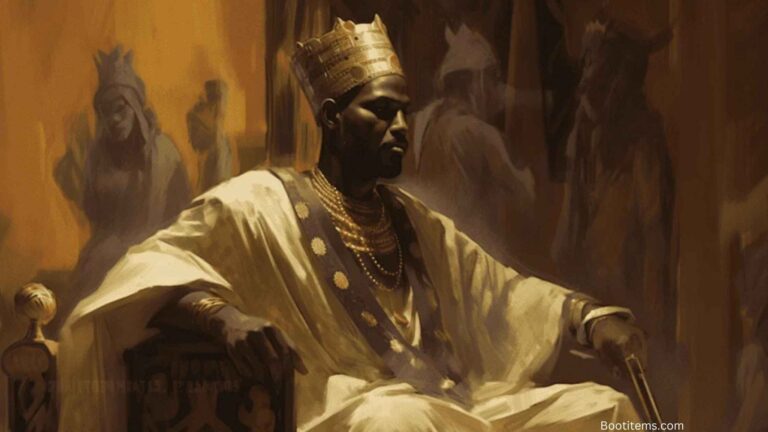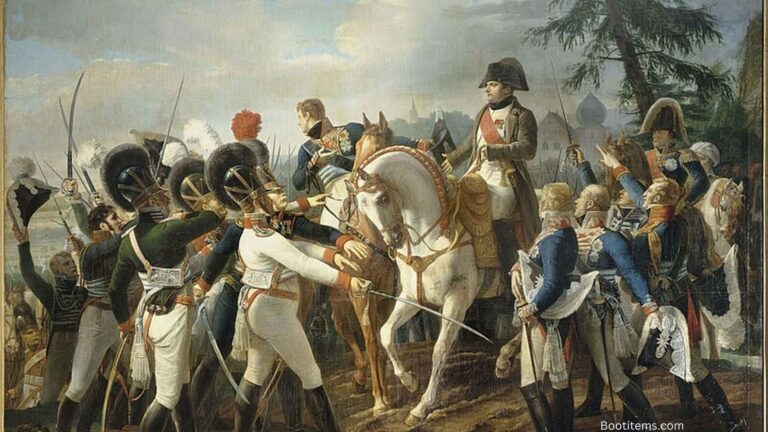The Battle of Buffalo: Conflict in the War of 1812
The Battle of Buffalo was a significant engagement during the War of 1812, occurring on December 30, 1813, near the Niagara River in New York. British forces successfully drove off American defenders and destroyed numerous buildings and ships in retaliation for earlier American actions.
Historical Context
The Battle of Buffalo took place during a crucial period of the War of 1812, a conflict between the United States and Great Britain that lasted from 1812 to 1815. This war was fought for various reasons, including trade restrictions, British impressment of American sailors, and American expansionist ambitions in Canada.
The Niagara Frontier
The Niagara Frontier, which includes the area around the Niagara River and the Great Lakes, was a key battleground during the War of 1812. Both American and British forces sought to control this strategically important region, leading to numerous skirmishes and battles in the area.
British Retaliation
The Battle of Buffalo was part of a larger British campaign of retaliation for American actions earlier in the war. In December 1813, American troops had burned the Canadian village of Newark (present-day Niagara-on-the-Lake), leaving its inhabitants without shelter in the harsh winter.
This act provoked a strong response from British forces, who sought to strike back against American settlements along the Niagara Frontier.
The Battle
The Battle of Buffalo, also known as the Battle of Black Rock, unfolded in the early hours of December 30, 1813. It was a well-planned and executed operation by British forces under the command of Lieutenant General Gordon Drummond and Major General Phineas Riall.
British Preparations
Prior to the battle, British forces had already captured Fort Niagara and conducted raids on several American villages along the Niagara River. These actions were part of a larger offensive planned by Drummond, who had recently been appointed Lieutenant Governor of Upper Canada.
The Attack
The British attack on Buffalo began around midnight on December 29, 1813. Riall led a force of approximately 1,400 men, including British regulars, Canadian militia, and Native American allies. The force crossed the Niagara River and landed at two points: the main body under Riall landed about two miles downstream from Black Rock, while a smaller force under Lieutenant Colonel John Gordon landed directly at Black Rock.
American Defense
The American forces, led by Major General Amos Hall, were caught largely unprepared for the British assault. Despite having a numerical advantage, with around 2,000 men, many of the American troops were poorly trained militia who had little combat experience.
The Battle Unfolds
As dawn broke on December 30, the British forces advanced on the American positions. Hall attempted to organize a defense, but his efforts were hampered by the inexperience of his troops and the surprise nature of the attack. The American right flank quickly collapsed under British pressure, forcing Hall to order a general retreat to Buffalo.
Aftermath
The British pursued the retreating Americans all the way to Buffalo, about two miles away. Once there, British and Native American forces sacked the town, burning down all but four of its buildings. They also destroyed the navy yard and several armed vessels.

Consequences of the Battle
The Battle of Buffalo had significant consequences for both the immediate area and the broader course of the War of 1812.
Destruction of Buffalo and Black Rock
The most immediate impact of the battle was the near-total destruction of Buffalo and Black Rock. Almost all buildings in both settlements were burned to the ground, leaving the local population without shelter in the middle of winter. This destruction had long-lasting effects on the region’s development.
Military Implications
The British victory at Buffalo helped to secure their control over the Niagara Frontier, at least temporarily. It also demonstrated the vulnerability of American settlements along the border and the need for better defenses and more experienced troops.
Morale and Public Opinion
The defeat at Buffalo and the subsequent destruction of the town had a significant impact on American morale. It highlighted the real dangers of the war and the potential consequences of failure. However, it also stiffened resolve in some quarters, leading to calls for better preparation and a more aggressive prosecution of the war.
Legacy of the Battle
The Battle of Buffalo, while not as well-known as some other engagements of the War of 1812, has left a lasting legacy.
Historical Significance
The battle is remembered as a significant event in the history of Buffalo and Western New York. It marks a pivotal moment in the development of the region and is commemorated through various historical markers and memorials.
Military Lessons
The battle provided important lessons for the American military. It highlighted the need for better training and preparation, especially for militia forces. It also underscored the importance of maintaining strong defenses along the border with British North America (later Canada).
Impact on U.S.-Canadian Relations
The Battle of Buffalo, along with other engagements along the Niagara Frontier, played a role in shaping the future relationship between the United States and Canada. The destruction and hardship caused by these battles on both sides of the border contributed to a desire for peaceful coexistence in the aftermath of the war.
Key Figures in the Battle
Several important military figures played crucial roles in the Battle of Buffalo.
Lieutenant General Gordon Drummond
Drummond was the newly appointed Lieutenant Governor of Upper Canada and the overall commander of British forces in the region. He planned the offensive that included the attack on Buffalo.
Major General Phineas Riall
Riall led the British forces in the actual attack on Buffalo and Black Rock. His effective command and the discipline of his troops were key factors in the British victory.
Major General Amos Hall
Hall was the commander of the American forces defending Buffalo and Black Rock. Despite his efforts, he was unable to effectively organize a defense against the British attack.
Buffalo Soldiers: A Different Battle
While not directly related to the 1813 Battle of Buffalo, it’s worth noting another significant use of the term “Buffalo” in American military history: the Buffalo Soldiers.
Origin of the Buffalo Soldiers
The term “Buffalo Soldiers” originally referred to members of the 10th Cavalry Regiment of the United States Army, which was formed in 1866. Over time, the term came to be applied to all African American regiments formed in 1866, including the 9th and 10th Cavalry and the 24th and 25th Infantry Regiments.
Service and Achievements
The Buffalo Soldiers served with distinction in various conflicts, including the Indian Wars, the Spanish-American War, and the Philippine-American War. They were known for their courage and skill, earning respect on the battlefield despite facing racial discrimination.
Legacy of the Buffalo Soldiers
The Buffalo Soldiers played a crucial role in the westward expansion of the United States and left a lasting legacy in American military history. Their service helped pave the way for greater integration and recognition of African Americans in the U.S. armed forces.
Conclusion
The Battle of Buffalo was a significant engagement in the War of 1812 that had lasting consequences for the region and the broader conflict. It demonstrated the vulnerabilities of American defenses along the Niagara Frontier and the destructive potential of the war. While the battle resulted in a British victory and the near-total destruction of Buffalo and Black Rock, it also provided important lessons for the American military and played a role in shaping the future relationship between the United States and Canada.
The legacy of this battle continues to be remembered and studied today, serving as a reminder of the complex and often brutal nature of the War of 1812. It stands as a testament to the resilience of the people of Buffalo and Western New York, who rebuilt their communities in the aftermath of this devastating attack.
As we reflect on events like the Battle of Buffalo, we gain a deeper understanding of the challenges and conflicts that have shaped our nations and communities. This knowledge can inform our present-day decisions and relationships, helping us to build a more peaceful and cooperative future.
FAQs
- When did the Battle of Buffalo take place?
The Battle of Buffalo took place on December 30, 1813, during the War of 1812. - Who were the main commanders in the Battle of Buffalo?
The British forces were led by Lieutenant General Gordon Drummond and Major General Phineas Riall, while the American forces were commanded by Major General Amos Hall. - What was the outcome of the Battle of Buffalo?
The British forces were victorious, driving off the American defenders and destroying much of Buffalo and Black Rock. - Why did the British attack Buffalo?
The attack on Buffalo was part of a larger campaign of retaliation for earlier American actions, particularly the burning of the Canadian village of Newark. - How did the Battle of Buffalo affect the local population?
The battle resulted in the near-total destruction of Buffalo and Black Rock, leaving many inhabitants without shelter in the middle of winter. - What lessons were learned from the Battle of Buffalo?
The battle highlighted the need for better training of American militia forces and stronger defenses along the border with British North America. - How does the Battle of Buffalo relate to the Buffalo Soldiers?
While not directly related, both are significant parts of American military history. The Battle of Buffalo was an engagement in the War of 1812, while the Buffalo Soldiers were African American regiments formed after the Civil War. - Are there any memorials or historical markers commemorating the Battle of Buffalo?
Yes, there are several historical markers and memorials in the Buffalo area that commemorate the battle and its impact on the region.

Samantha Yates is a creative writer and journalist with expertise in content creation and editing. She holds an MA in Creative Writing and brings professional experience from Lionbridge, where she developed engaging content for leading technology companies







